Tipping culture is one of those deeply American things that are hard to comprehend. The laws on tips vary from state to state. And instead of offering stable hourly pay for all members of staff, many food industry businesses rely, at least in part, on their customers’ generosity to rack up enough money for wages.
Many servers depend on these tips to make ends meet. However, sometimes, they become just a tad too greedy and ungrateful. One Reddit user shared how a waiter reacted to a 30%+ tip after a fancy steakhouse dinner. The situation made her feel incredibly uncomfortable. Read on for the full story and to see what the internet had to say about the entire drama.
Bored Panda wanted to learn more about tipping culture in the US, as well as ‘tipflation,’ so we reached out to Max Alberhasky, Ph.D., an Assistant Professor of Marketing at California State University Long Beach and the host of the ‘Psychology, Money, and Happiness’ blog on Psychology Today. He was kind enough to answer our questions. You’ll find our full interview with the expert below!
Many American servers rely on tips just to survive
Image credits: energepic.com (not the actual photo)
However, some servers are unhappy even when customers are extremely generous
Image credits: MART PRODUCTION (not the actual photo)
Image credits: anon
Business owners find ways to pressure consumers to tip more often and in greater amounts
According to Alberhasky, from California State University Long Beach, tipping lies at the intersection where psychology meets money. The phenomenon where there’s a rise in tipping opportunities and an expectation that consumers tip more is known as ‘tipflation.’ It’s something that the marketing expert has noticed in his own day-to-day life.
“Businesses are learning about tactics they can use to increase tip amounts, drawing from psychology and marketing research,” Alberhasky told Bored Panda via email how owners might ‘seed’ the tip jar, offer higher default tipping options, and incorporate social pressure. “The instance of the waiter chasing down the couple would be an example of a waiter who has clearly become accustomed to receiving large tips, and using social pressure to directly confront the diners,” he noted.
We were interested to learn about some of the negative aspects of tipping culture in the United States. “The main negative aspect I see with current tipping culture is tricking consumers into paying more than they initially wanted to or had planned to, using psychological tactics to elicit more money in tips. Times are tight for many consumers, and businesses often use iPads or tablets to accept tips now in the service industry,” Alberhasky said.
“These devices allow businesses to nudge consumers to tip more by setting high default options (e.g., 20%, 25%, or 30%), leaving us to infer that we should tip generously or the staff isn’t paid well (even if this is not true). While there is usually an option for no tip or custom tip, people often feel time pressure (due to lines or busy waiters) and social pressure (the waiter, our friends, or other patrons watching us), leading us to pick a high default tip and move on with our day. Research shows that consumers do not factor secondary costs (like tips) into their memory or expectations, so consumers can break the bank over time by overtipping.”
Continually growing ‘tipflation’ might make some customers rebel
Meanwhile, we were also curious why tipping is such a phenomenon in the US, and what it would take for this culture to either be improved or replaced entirely. According to the marketing expert, Americans believe that service workers should be paid and tipped based on how helpful they are or how well they do their job.
“This provides an incentive for customer service workers to do their best in order to receive a more generous tip from customers. While this is a good idea in theory, it is falling apart because businesses are using research-based tricks that cause consumers to tip more on iPads/tablets, even if the service was bad or involves low effort,” the expert told Bored Panda that an example of this would be someone who simply cracks open a can for the customer.
Alberhasky believes that if tipflation continues to grow, consumers might rebel and choose to go to eat at businesses that don’t pressure them to tip so much. “I have also noticed a movement towards paying service workers a living wage and doing away with tips entirely.” The expert noted that the creators of the satirical and irreverent animated show South Park have recently (re)opened Casa Bonita in Colorado which pays their staff $30 per hour and doesn’t allow tips. “We’ll see if this cool trend catches on.” If you found the expert’s insights interesting, be sure to check out his blog on Psychology Today.
Mandatory tips don’t necessarily mean better service
A 30% tip would likely make most servers incredibly happy. It’d be an indication that their customers thought very highly of their skills and wanted to reward them for all the extra effort. However, according to the redditor, the service she and her husband experienced was nothing special.
In fact, it was pretty bad. However, the couple still left a generous tip. Obviously, their waiter had very different expectations. It’s highly likely that he was used to even larger tips because it was a fancy restaurant. But at this point, you really have to ask yourself: where’s the line? Where’s the line when the expectations for larger and larger tips are so big that it becomes impractical to go out to dinner?
When tipping becomes mandatory and inflated, you’re not rewarding staff members for providing excellent quality; you’re just paying a large chunk of their wages even when your experience is subpar. Most redditors who read the OP’s story thought that the couple did nothing wrong when they took the tip back. Many of them were appalled by how entitled the server was.
It’d be wrong to assume that there’s a direct link between tipping and service quality. As Simon Fung points out on Medium, many European countries have automatic service charges, while Japan doesn’t have tipping but offers much better service than the US. Fung also points out that, according to the IRS, around 40% of income from tips doesn’t even get reported.
Image credits: Andrea Piacquadio (not the actual photo)
Some servers can get jealous of their colleagues if they earn more than they do
Another issue is that many tipped workers do not have the financial stability that they deserve if they’re constantly relying on strangers’ generosity. It can also lead to a build-up of resentment if a customer doesn’t tip ‘enough’ (that sum can vary from restaurant to restaurant and waiter to waiter), doesn’t think the service was above average, or doesn’t have the cash to match the suggested rate.
According to a server working in the US that Bored Panda spoke to before, “the only way to get rid of it is to get rid of the tip culture and pay a living wage to servers.” She explained that because one’s livelihood depends on your tips as a server and you don’t make much in the form of a paycheck, it can lead to a lot of frustration among the staff.
“If someone works the same job as you but makes more money, it will breed jealousy,” she explained that the workplace environment can become very negatively charged if one or more employees are much more skilled at getting tips than others.
“People loved my attitude and how attentive I could be. I also anticipated any of their needs. My regular customers liked me because I would talk to them get to know what they liked and I would joke with them,” the server shared how she would approach things at her job.
Many internet users were horrified by how entitled the waiter acted. Here’s what they had to say
Okay Boredpanda. Now the click-baiting stories about tips have just gone *too* far. This one is so stupid - there aren't even two sides to the story, it's just dumb. At least do us the courtesy of posting something vaguely worth reading.
One thing I noticed from the comments, they mentioned the server earned $25 per hour (assuming the $50 tip and two hours for dinner). Realistically he earned far more than that. Unless the other tables tipped *nothing* he would have made tips from them as well. And assuming he's paid at least *some* hourly wage there'd be that as well. Considering he thinks $50 is low, that would suggest the other tables tipped at least $50 if not more. So he's gotta be making more than $50 an hour for that time.
Assuming that this is the US... waitpeople don't have a base pay of $25. This whole story seems made up tbh
Load More Replies...Okay Boredpanda. Now the click-baiting stories about tips have just gone *too* far. This one is so stupid - there aren't even two sides to the story, it's just dumb. At least do us the courtesy of posting something vaguely worth reading.
One thing I noticed from the comments, they mentioned the server earned $25 per hour (assuming the $50 tip and two hours for dinner). Realistically he earned far more than that. Unless the other tables tipped *nothing* he would have made tips from them as well. And assuming he's paid at least *some* hourly wage there'd be that as well. Considering he thinks $50 is low, that would suggest the other tables tipped at least $50 if not more. So he's gotta be making more than $50 an hour for that time.
Assuming that this is the US... waitpeople don't have a base pay of $25. This whole story seems made up tbh
Load More Replies...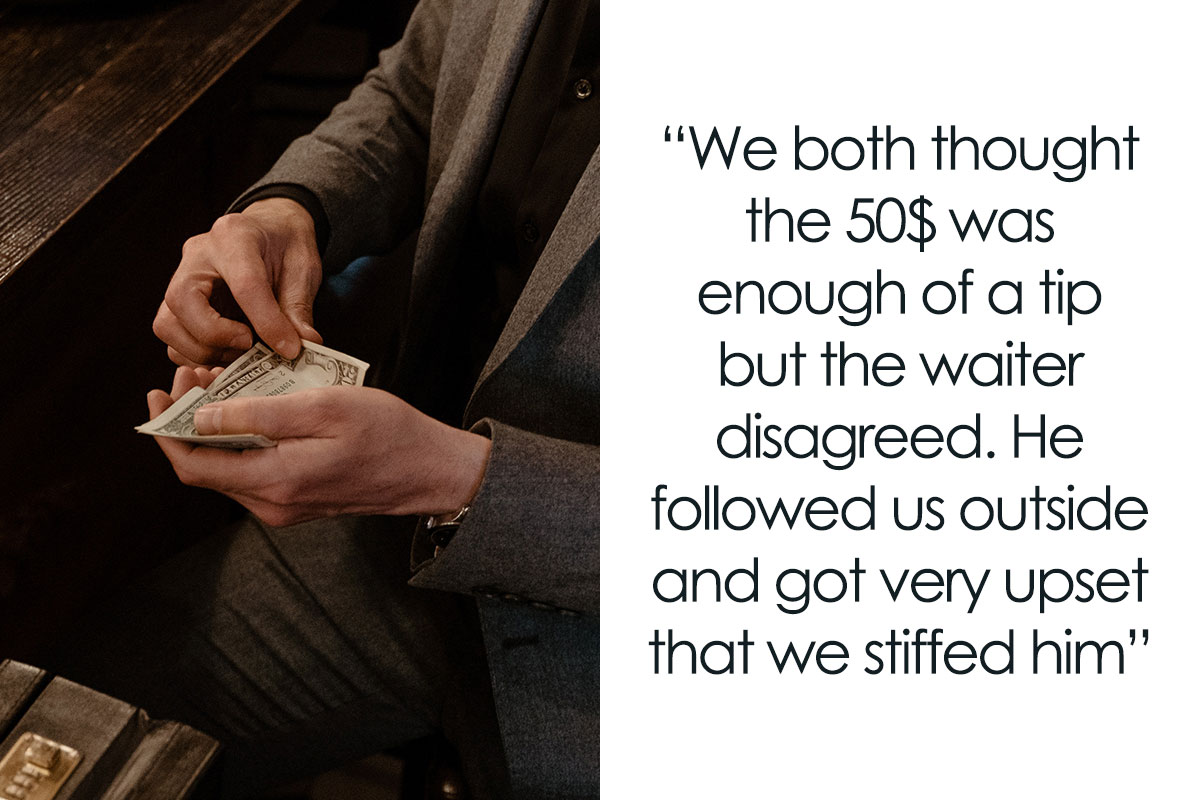
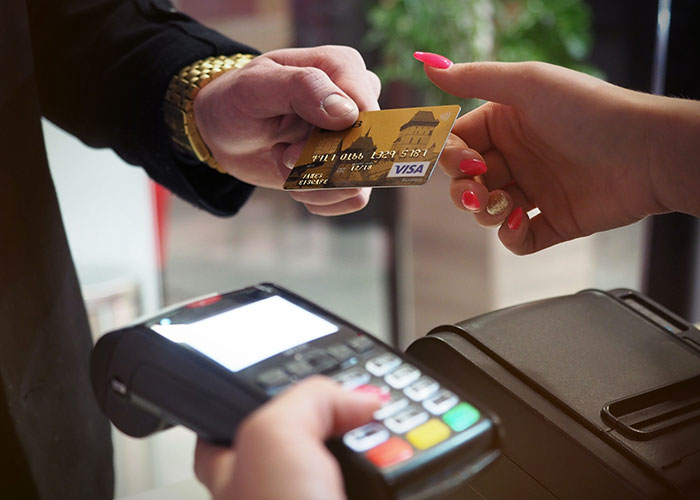
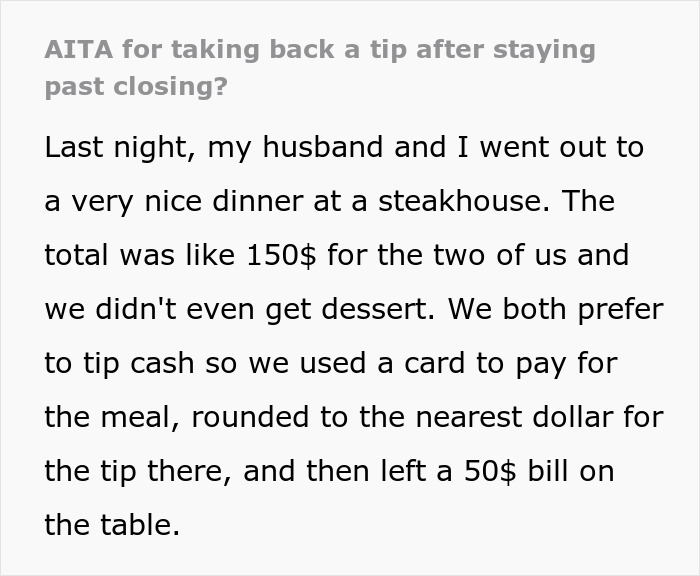
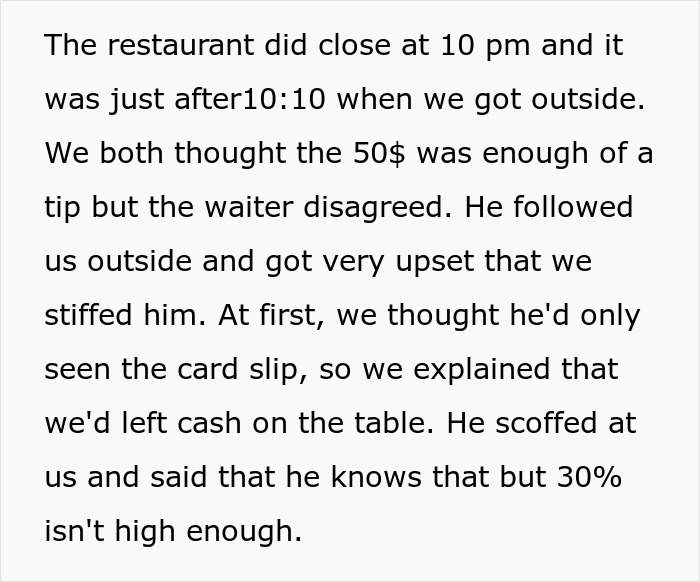
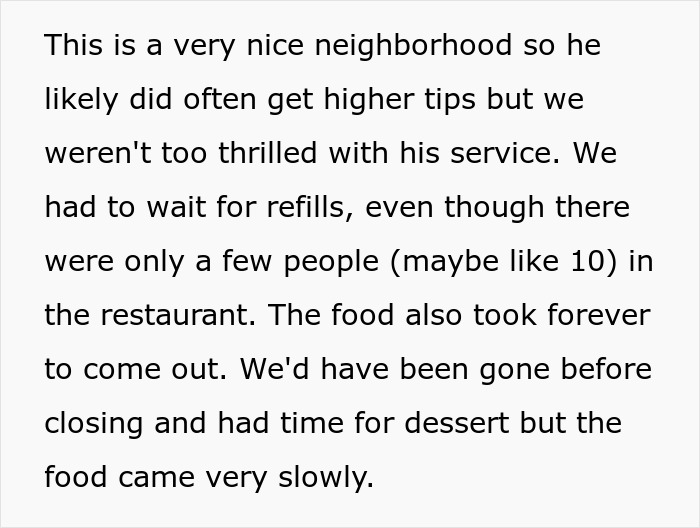
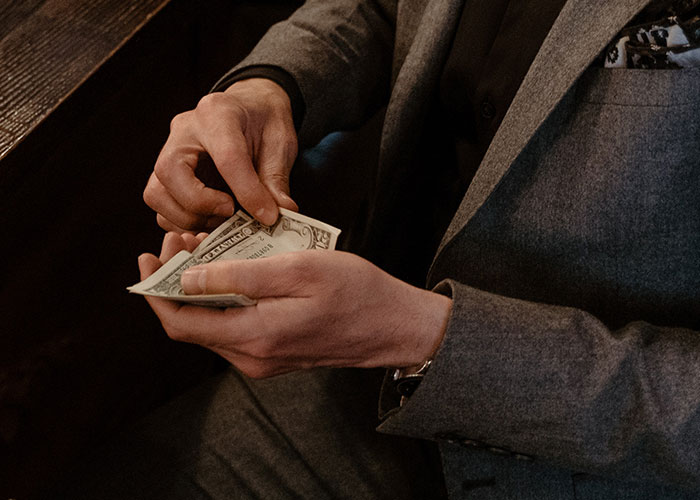

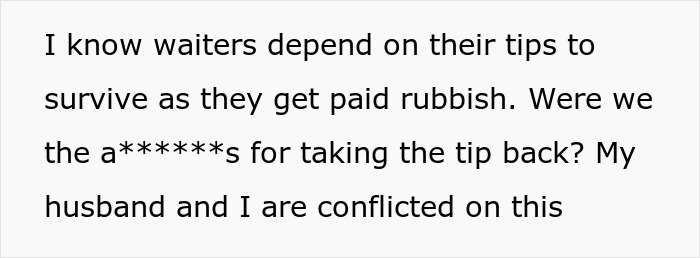
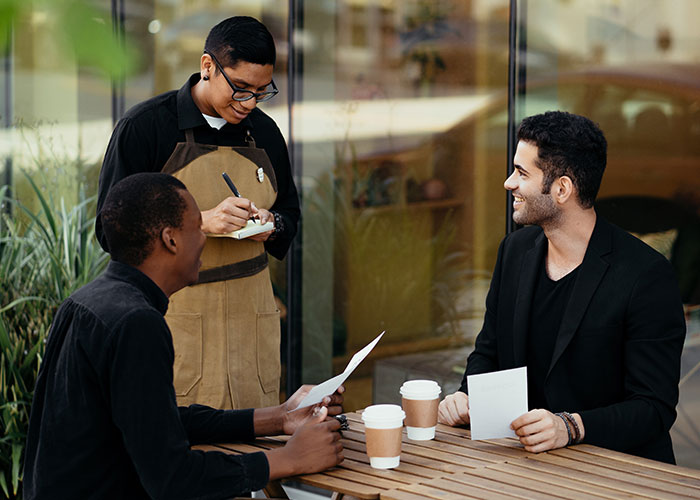



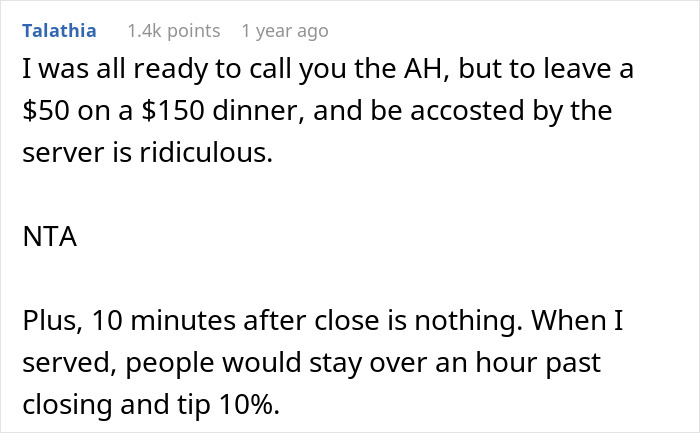
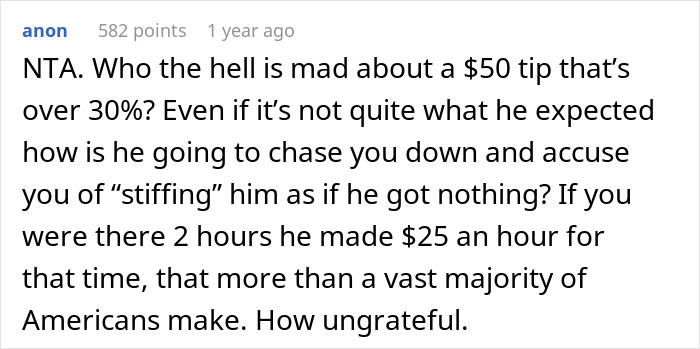
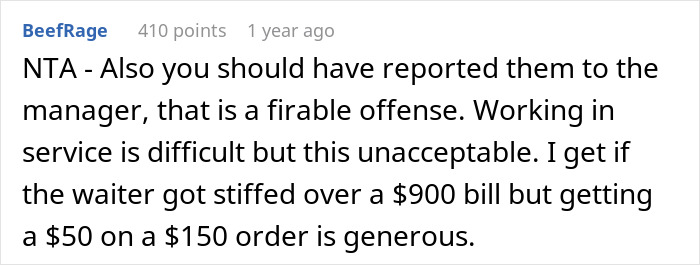


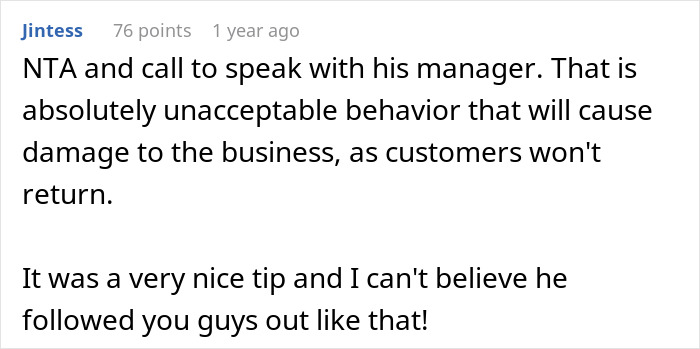
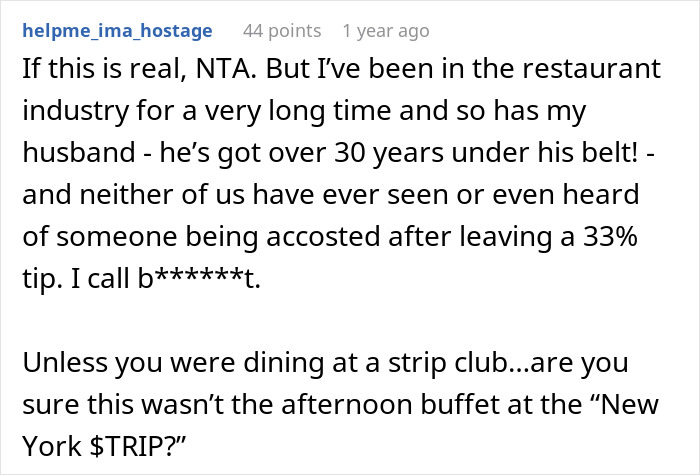
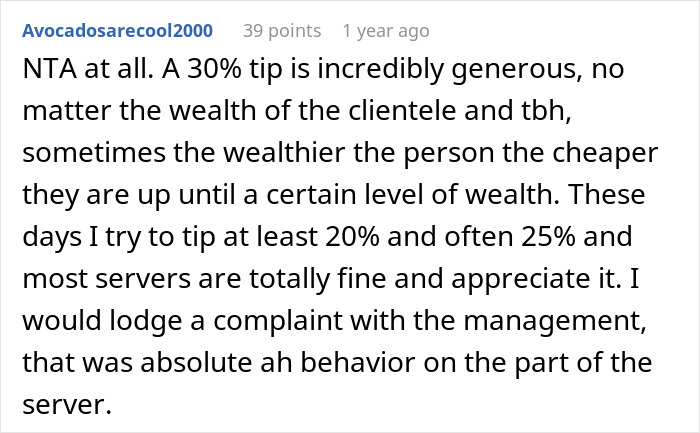
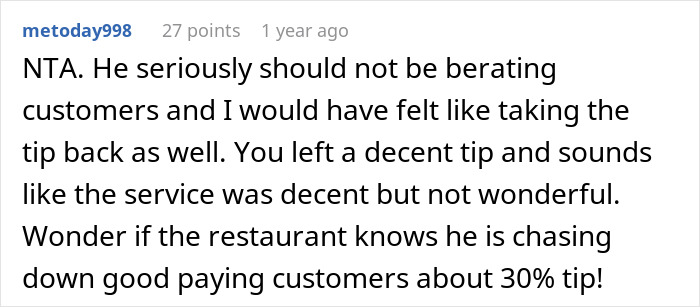

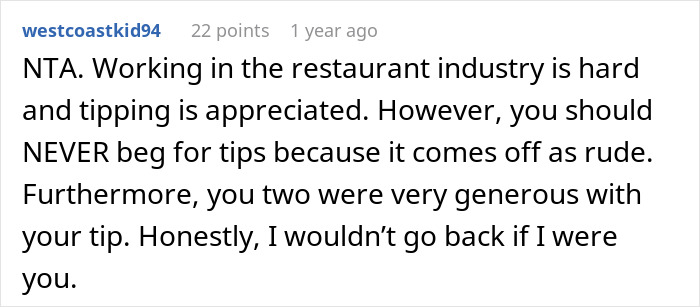

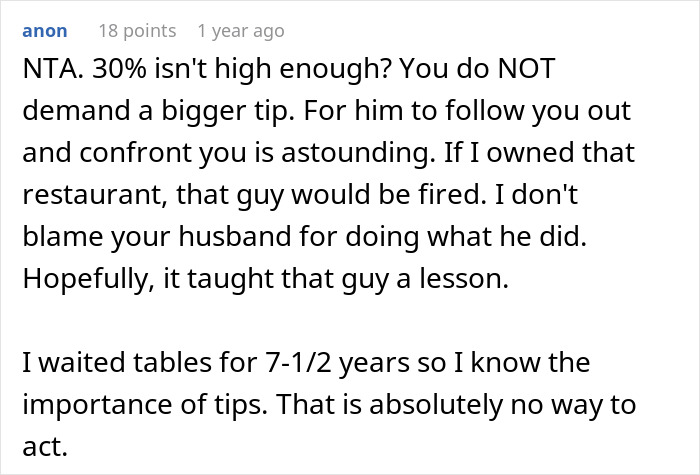




95
74